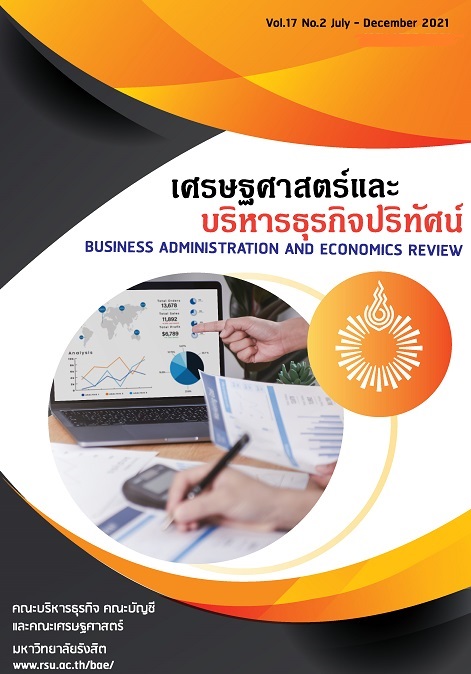Guidelines for the Tourism Destination Development of Chai Si Temple to Support Khon Kaen Smart City
Keywords:
Tourism Destination Development, Wat Chai Sri, Khon Kaen, Smart CityAbstract
This research aims to examine historical background of traditional church at Wat Chai Sri as well as suggest guidelines for develop this tourism destination support Khon Kaen Smart City. This research used various qualitative instruments consist of filed survey and in depth interview. Interview questions were designed and tested for validity and reliable. Both target groups and key informants were determined purposively and specifically. Based on the results of study, it is found that Wat Chai Sri was built in 1865 and the church was built in 1900. The dominant characteristics are traditional walls that made from unique and beautiful cultivated wood including roof, doors and windows. The pictures appear on walls were drawn by local artists based on folk stories of Sang Sin Chai. The painting colors were obtained from natural woods and materials. Development guidelines for this tourism destination to support smart city have to deploy essential elements of both smart city concept and sustainable development concept as follows. Smart transportation must be very convenience and speed mobility. Smart living must be improve the quality of lives for local residents. Smart citizen must be stimulate the understanding about smart city to local residents. Smart economy must be accelerate high tourism revenue of local residents. Smart environment must be improve and manage efficiently better, beautiful and safe environment for local residents. Smart education must promote Wat Chai Sri as important learning area in community. Smart governance must be distribute and promote tourist destination via many channels to be more well known among tourists by using on line medias. These guidelines have to be implemented effectively and consciously to support smart city to assurance improving better quality of lives and community economy development by using cultural tourism promotion. These guidelines also contribute to generate sustainable tourism revenue.
References
Cros Du Hilary and Bob McKercher. (2014). Cultural Tourism, Second Edition. Routledge, London.
Robinson J.W, Jr. and Gary Paul Green. (2011) Introduction to Community Development: Theory, Practice and Service-Learning. SAGE Publication, Incs., London.
Nilsson Mans, Griggs Dave and Visbeck Martin. (2016). Policy: Maps the Interaction between Sustainable Development Goals. Nature, 534, 320-322 (2016), Published 15 June,2016.
Ministry of Culture. (2018). https://www.m-culture.go.th › article_view
Ministry of Tourism and Sports. (2562). https://www.mots.go.th › old › more_new
Tourism Authority of Thailand (TAT.) (2019). https://thai.tourismthailand.org › Attraction
Khon Kaen Province. (2019). www.khonkaenpoc.com
www.kkmuni.go.th › pdf-download › smart-city-60
https://sites.google.com/site/watchaisri
www.brandage.com › article › Khon Kaen
Downloads
Published
How to Cite
Issue
Section
License
Copyright (c) 2021 Business Administration and Economics Review

This work is licensed under a Creative Commons Attribution-NonCommercial-NoDerivatives 4.0 International License.
The contents in Business Administration and Economics Review can be used for publication. But do not modify, modify or use it for trade and profit.


